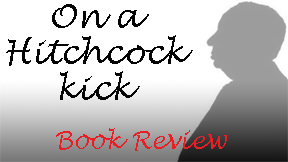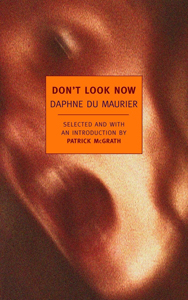“Rebecca” (1938 novel, 1940 movie) is a pure example of Alfred Hitchcock taking a Daphne du Maurier story and adapting it for the screen. Interestingly, another du Maurier story provides an example of Hitchcock taking the concept but doing his own thing: “The Birds” (1952 short story, 1963 movie).
As written by du Maurier, “The Birds” was groundbreaking but is rather tame when read today, although its influence can’t be denied. She focuses on one farm family as the inexplicable bird attack you’re familiar with from the film is unleashed on rural, coastal England.
More efficient suspense
Likely intense and mysterious when Fifties readers came upon it, “The Birds” features an intelligent Everyman, Nat Hocken, who thinks to board up his windows and chimneys, and watch his level of supplies, whereas his neighbors brush off the early warning signs. As such, Nat is able to protect his wife and two kids whereas the neighbors aren’t so lucky.

“Don’t Look Now” (2008, including “The Birds”)
Subtitle: “Stories Selected and with an Introduction by Patrick McGrath”
Author: Daphne du Maurier
Genre: Nine horror and suspense short stories
Coming off “Psycho” – famous for switching protagonists midstream — Hitchcock in my opinion was enamored with the idea that suspense could be created regardless of plot points. And it’s well documented that one of his main goals at the time was to mold Tippi Hedren into a star.
So as such, in “The Birds” as adapted by Evan Hunter with Hitchcock’s guidance, we get a soapy plotline following Hedren’s Melanie. There’s some family drama with a man Melanie is perhaps thinking of dating, and a brief love triangle, but the main reason this city woman is caught on the California coast is the bird attack. Between the bland drama and the special effects that haven’t aged well, I find “The Birds” to be one of the weakest Hitchcock films.
Before du Maurier’s story, nature-run-amok wasn’t a common genre; more common was science-run-amok in the vein of “Frankenstein.” It’s fair to say “The Birds” begat 1975’s “Jaws” (without clear reason, a shark attacks beachgoers), and it also calls to mind early Stephen King riffs such as 1978’s “Graveyard Shift,” wherein rats have taken over a building.
Memorable endings
“The Birds” is enjoyable enough homework within the collection I picked up from my library – the 2008 anthology going by the title “Don’t Look Now.” Since we’re on the topic, here’s what else is in the nine-story collection:
The 1973 movie “Don’t Look Now” is – other than “Rebecca” – the greatest achievement among du Maurier adaptations. The 1971 short story is just as good. A British husband and wife, who recently lost their daughter to an illness, travel to Venice.

A pair of psychic women, the wife’s fragile mood, the tension of confusing streets and the language barrier combine for a stressful situation for the man, and a thrilling tale for the reader. Here, du Maurier sustains mood right up until the dark conclusion, and this is the greatest work of hers I’ve thus far read.
Also respectable is “Indiscretion,” in which a statement someone should’ve kept to themselves proves pivotal. It’s one of those fascinating stories that ends at the climax; sometimes those are frustrating, sometimes they are neat. The latter is the case here. I first recall being blown away by this type of ending in Daniel Keys Moran’s “Last One Standing: The Tale of Boba Fett” in 1996’s “Star Wars: Tales of the Bounty Hunters.”
Another strong final twist comes in “Kiss Me, Stranger.” Before the ending (more chilling in 1952, but still good now), it’s a spot-on portrayal of a quiet man who becomes swept up by a fascinating woman who is showing him attention, rather than the brush-off he’s become accustomed to. A gender-flipped exploration of imbalanced love comes in the super-short “La Sainte-Vierge.”
Pre-‘Twilight Zone’ weirdness
Du Maurier’s tales often evoke “The Twilight Zone,” but she was before her time – that series began in 1959. Some have not aged as well, simply because the tropes are more common now than when du Maurier devised them. A ghost ship in “Escort”? Meh. A woman’s new lenses giving her an alternate view of the world in “The Blue Lenses” (1959)? Yeah, I’ve seen “They Live.”
That’s not her fault, but when stories have extra emotional depth, that allows for timelessness. Such is the case with “Split Second,” as we soak up a woman’s panic as she is randomly transported ahead in time (something we realize before she does, but that’s understandable; she lives in a rational world, we live in this book).
And more ambitiously, it’s the case in “Monte Verita” (1952), in which the author attempts to conjure up the majesty of mountains whose peaks ascend almost to the heavens. It’s overlong, but it touches upon love as a feeling that can’t be shaken for someone gone from your life. The POV transitions between two best friends in love with the same ephemeral woman who has joined a religious cult in the clouds. I’d like to see how filmmakers tackle the surprise ending someday.
Taken as a whole, the nine stories show that du Maurier short-story and novel adaptations deserve to expand beyond the three Hitchcock films (“Jamaica Inn” is the other) and “Don’t Look Now.” And “The Birds” itself shows that sometimes the story motors along better than the movie – even when it’s Hitchcock at the tiller.
RFMC’s Alfred Hitchcock series reviews works by the Master of Suspense, plus remakes and source material. Click here to visit our Hitchcock Zone.

